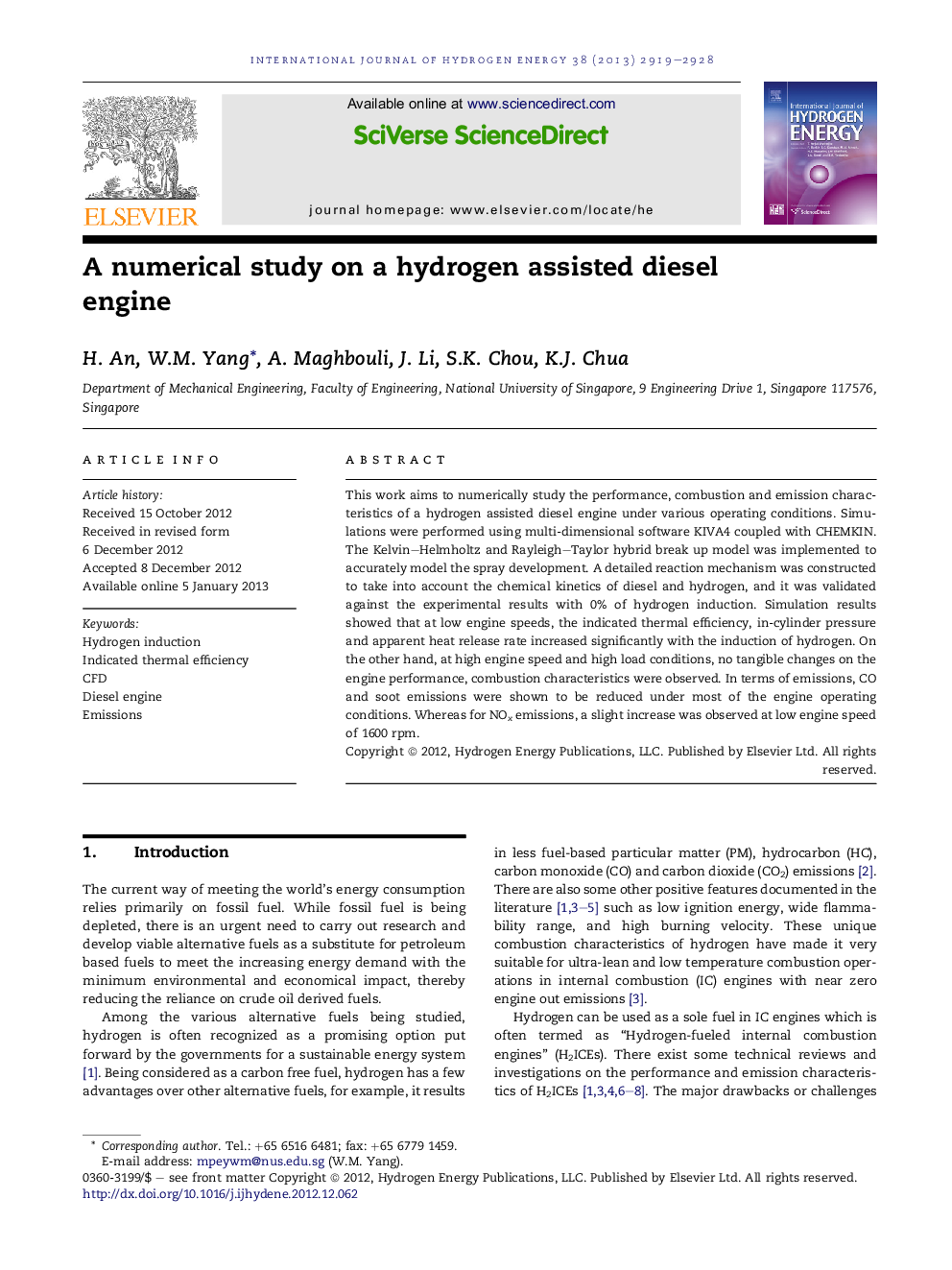| Article ID | Journal | Published Year | Pages | File Type |
|---|---|---|---|---|
| 1273824 | International Journal of Hydrogen Energy | 2013 | 10 Pages |
This work aims to numerically study the performance, combustion and emission characteristics of a hydrogen assisted diesel engine under various operating conditions. Simulations were performed using multi-dimensional software KIVA4 coupled with CHEMKIN. The Kelvin–Helmholtz and Rayleigh–Taylor hybrid break up model was implemented to accurately model the spray development. A detailed reaction mechanism was constructed to take into account the chemical kinetics of diesel and hydrogen, and it was validated against the experimental results with 0% of hydrogen induction. Simulation results showed that at low engine speeds, the indicated thermal efficiency, in-cylinder pressure and apparent heat release rate increased significantly with the induction of hydrogen. On the other hand, at high engine speed and high load conditions, no tangible changes on the engine performance, combustion characteristics were observed. In terms of emissions, CO and soot emissions were shown to be reduced under most of the engine operating conditions. Whereas for NOx emissions, a slight increase was observed at low engine speed of 1600 rpm.
► Hydrogen assisted diesel combustion was numerically investigated. ► KH–RT break up model was implemented to increase the accuracy of KIVA–CHEMKIN code. ► Detailed reaction mechanism was constructed for the hydrogen and diesel combustion. ► Thermal efficiency increase with H2 addition at low engine speed. ► CO and soot emissions generally decrease with the H2 addition.
